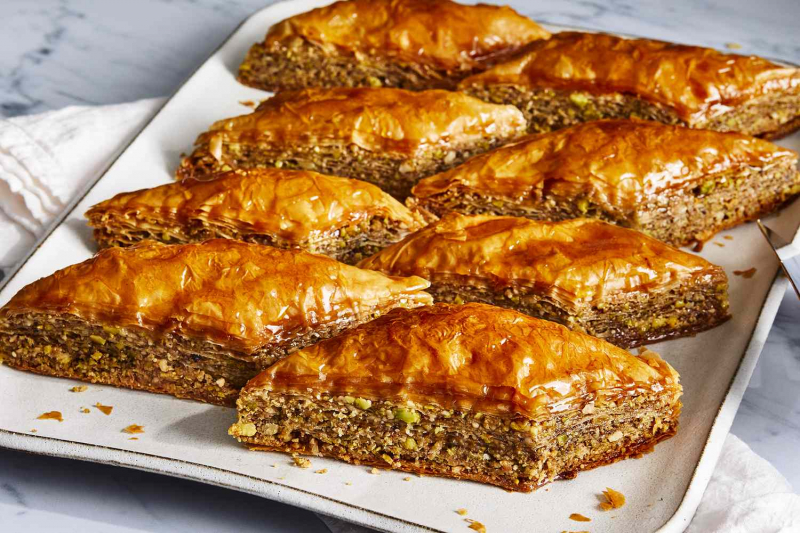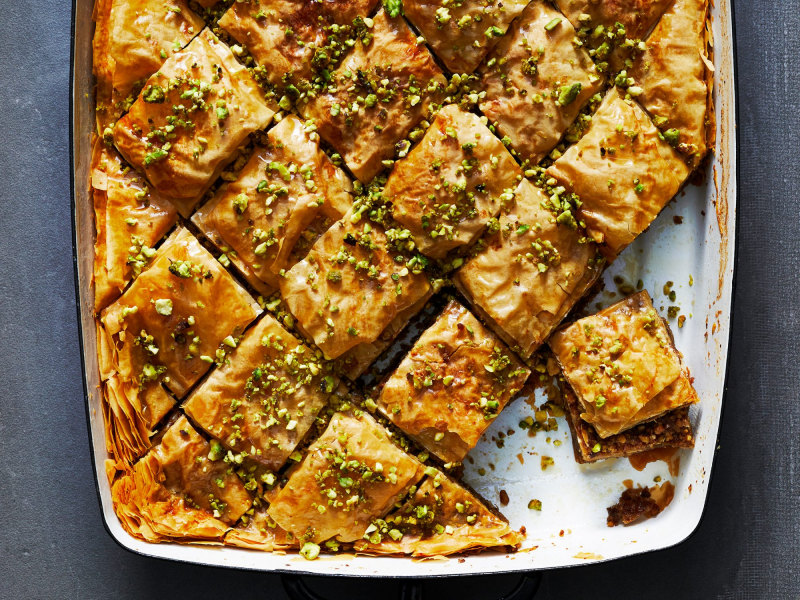Baklava
Dozens of delicate layers melt into a single tender bite in this syrupy confection, which is among the sweetest legacies of the Ottoman Empire. Layers of filo pastry, chopped nuts, and deliciously sweet syrup come together to make baklava – and its history has just as many layers as the dessert itself. Countries and cultures clash when it comes to the origin story: it’s claimed by both the Turks and the Greeks, but in reality, the history of the sweet is much more complex. It’s thought that very early versions of the pastry dessert were made in the 8th century BC by the Assyrians, whose empire covered a swathe of the Middle East, including some of modern-day Turkey.
Some sources say the recipe was fine-tuned by the Ottomans and that it served as a staple in Istanbul's Topkapı Palace through the 15th century. It’s also said that ancient Greek merchants, who loved the Assyrian delicacy, disbanded it across the Middle East as they traveled, making their own tasty alterations. It’s possible that both could be true but, at present, the version made in Turkey’s Gaziantep has protected status from the European Union. Here chefs prepare baklava in a restaurant kitchen in Gaziantep.
These days, pastry stores provide delicious trays that have been diamond-cut, filled with ground nuts, and covered in honeyed syrup. Just the most well-known of the syrup-drenched sweets from the Ottoman Empire, but for good reason. It is among the most alluring desserts in the world because to its straightforward list of ingredients and limitless variations.
Country: Turkey














